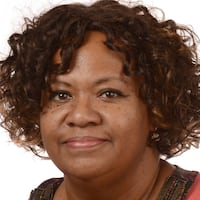Last month I wrote about Stone Mountain Village and referred to it as a part of South DeKalb. Technically, it is in the southern part of the county if you were to bisect DeKalb evenly — maybe more southeast. But from the reaction I received from a few readers, you would’ve thought I’d placed it in the third ring of Hell.
As a relative newcomer to metro Atlanta (six years), I didn’t realize the long-standing animosity between the North DeKalbers (DeKalbans? DeKalbites?) and their neighbors to the south was so volatile. Of course, the push for new cities across the county is rooted in the desire for local control, a more equitable allocation of resources and a voice for economic development. But while the “us versus them mentality” has come to a head in the last few decades, it seems it was always bubbling near the surface.
To get a better understanding of the history, I spoke to former DeKalb County CEO Liane Levetan and former state Sen. Steen Miles. Both were extremely active in local politics and civic endeavors leading up to their times in office and both still live in DeKalb County — in the same respective residences for several decades.
Miles lives in South DeKalb and saw two daughters graduate from Redan High School. One in 1985 when the school was about 95 percent white. The other graduated in 1995 when the school was about 95 percent black. In 10 years the “white flight” caused a redlining of development projects and interest rates on loans and insurance policies. It also was a shift in the mindset from homeowners to renters.
Many middle class blacks began the “great migration” from DeKalb to nearby Gwinnett and Rockdale counties. And with many of them went the fight to keep up nice neighborhoods and government accountability.
In talking about the change in DeKalb’s southside population, Steen pointed to Hidden Hills, a golf community that had one of the highest concentrations of wealth (black and white) in metro Atlanta in the 1990s. Today, the homeowners association struggles to get dues paid and maintain a sense of community. I lived in a rental house (one of many) there for a year.
While a handful of faithful homeownerss tried to keep up maintenance in the common areas and rally camaraderie, the results were often disappointing. They have beautiful homes that would fetch two or three times as much if they were a few miles north. Once the neighborhood declined, so did the housing values.
Levetan, who lives in the Lakeside area, doesn’t deny that race may be a factor in the divide, but said she sees better government accountability as a way to fix the problems. She recalled a community relations commission that brought geographical, economic and ethnic diversity to the same table. It was a way to allow different points of view to have an equal voice, she said.
That body no longer exists and with hundreds of longtime county employees taking a retirement deal in the recent past, DeKalb is lacking the experience and institutional knowledge to get things done the way it used to.
Both women are optimistic, however, that DeKalb isn’t down for the count. Putting all communities on a more equal footing and embracing differences instead of acting as if they don’t exist is a way to mend the divide, they said. It won’t happen overnight, but with the right leadership it can happen.
About the Author
The Latest
Featured


